STEPBible - Scripture Tools for Every Person - from Tyndale House, Cambridge
__
Quick overview
David Brewer
Chris Burrell
You may prefer: a very quick powerpoint in English or Spanish.
Overview
STEP Bible is packed full of features to help people study the Bible text, from reading and comparing different versions of the Bible to grappling with original language words, through using word clouds to track themes as they unfold in a book, STEP Bible can assist.
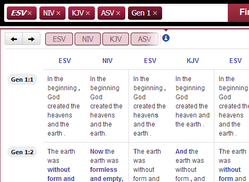 | 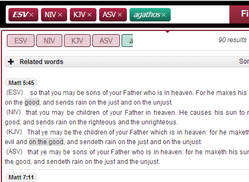 | 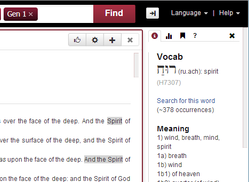 | 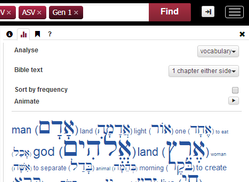 |
| Multi-version Bible lookups | Multi-version searches | Lexicon and definitions | Animated word clouds |
Brief functionality overview
There is a lot of functionality packed into STEP Bible, and this page outlines but a few.
Reading and comparing the Bible
By default you see a Bible in the language of your browser, with a Quick Help screen.
Choosing a passage
By simply typing a few letters in the search box, STEP offers a number of relevant Bible references.
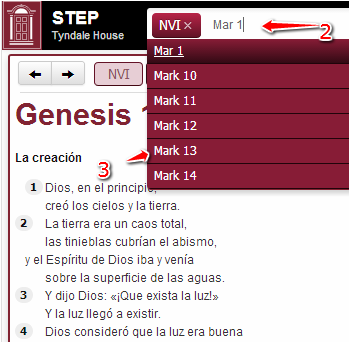
Choosing from many modern and ancient languages:
The versions are broken down by language. The top right-hand menu allows to quickly filter to the desired versions.
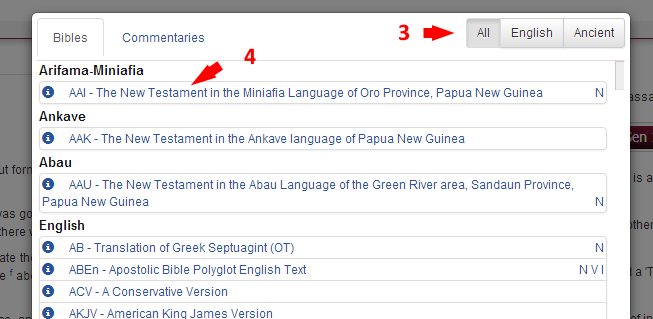
Multiple versions verse by verse
The Interleaved function shows Bible versions together, verse by verse: Any Bible can be included in the Interleaved format
Interlinears, word by word
The Interlinear function can be used to compare Bibles word-by-word. only tagged Bibles (marked "I") in the list) can be displayed as Interlinear
Comparisons translations in any language:
Any versions can be compared, so long as they are in the same language.
Compare many different texts and editions at the same time:
Comparisons ignore accents in Greek
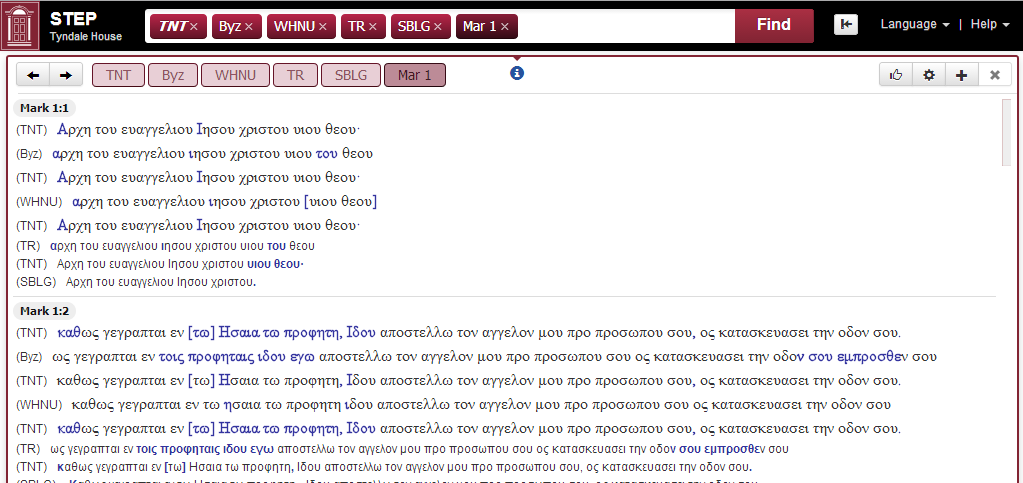
Original meanings and contextual information
Quick lexicon
Hover over a word to see the original word and other translations of that word in the same passage. You can see that "saw" is translated from the Hebrew ra.ah which is also translated "appear".
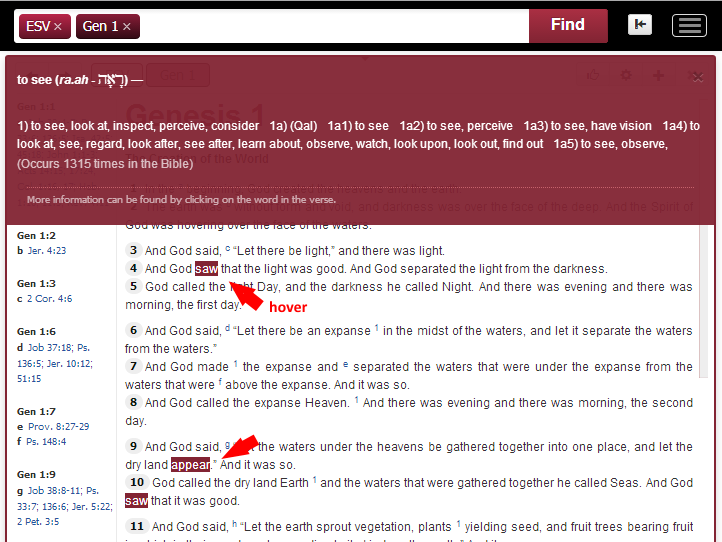
Full definition sidebar
The lexicon shows different meanings of a word throughout the Bible:
Word meanings from outside the Bible
The full lexicon below this includes meanings of a word where it is used outside the Bible:
![]()
Find the original behind any translation
When hovering over a verse number, STEP Bible shows a vocabulary popup, which describes the original language words used in that verse. From there, a user is able to look up every place the same original word is used. This feature works with all translations, whether they are tagged or not.
Word clouds
Word clouds are very useful for giving a quick overview of a particular passage. By selected "1 chapter either side" the user is given some context. There is also a play button to allow users to see themes develop through a book. Three types of word clouds exist: vocabulary (based on the original text), modern text (based on the actual English/contemporary language text) and subject (based on Nave's topical Bible)
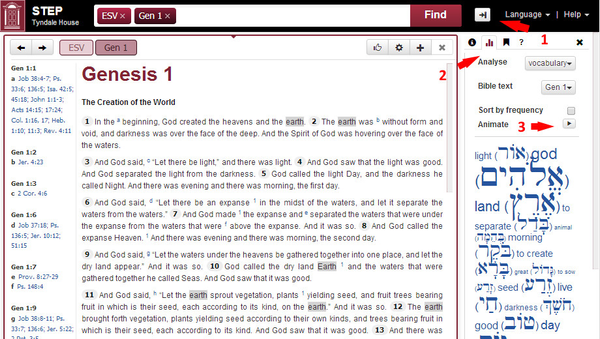
Searching the Bible
Multi-version searches
Display and /wiki/spaces/SUG/pages/20512795 as many Ancient Bible texts and translations:
Topical subject searches
Three different levels of detail make sure you aren't overwhelmed with too many results. H searches through the non-canonical headings. N does a overview search across the Nave Topical Bible. N+ does a extended search on the Nave Topical Bible.
Text searches
A text search queries the selected Bibles for the exact word as it appears in the text. Simple or complex text searches allow for almost any combinations of words.

Original language searches
Search for texts by words in the original languages by selected NT Word (Greek) or OT Word (Hebrew). A user does not require any Hebrew or Greek knowledge to research the original languages!
Combining searches
Using the search bar, you are able to quickly combine different types of searches. For example, a subject search is good for returning large passages referring to a particular topic. A word search is good to identify specific original language words. So combining a subject search (purple) for 'throne' with a word search (blue) for 'David' will return all passages referring to the throne of David, even if the 'throne' word is not explicitly mentioned.
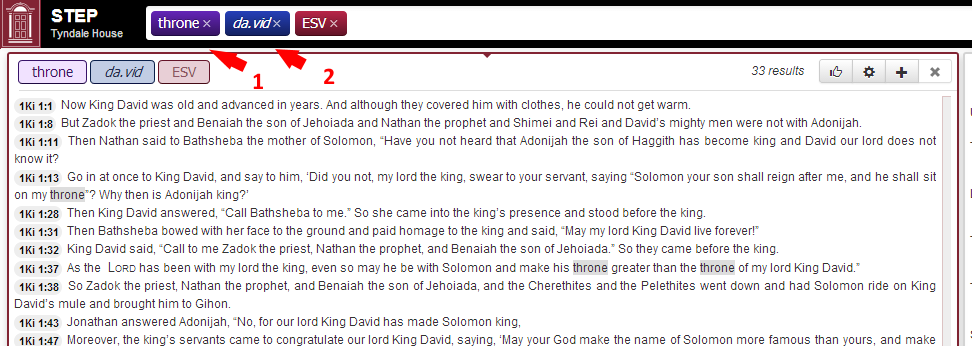
Usability
STEP Bible can be configured with many mother-tongue interfaces:
93 language interfaces are in currently in preparation
Many of these are machine-translated. Please click on "Help translate..." to improve these.
More side-by-side panels
A user can open many different passages and searches at any point in time, simply by clicking on the + symbol.
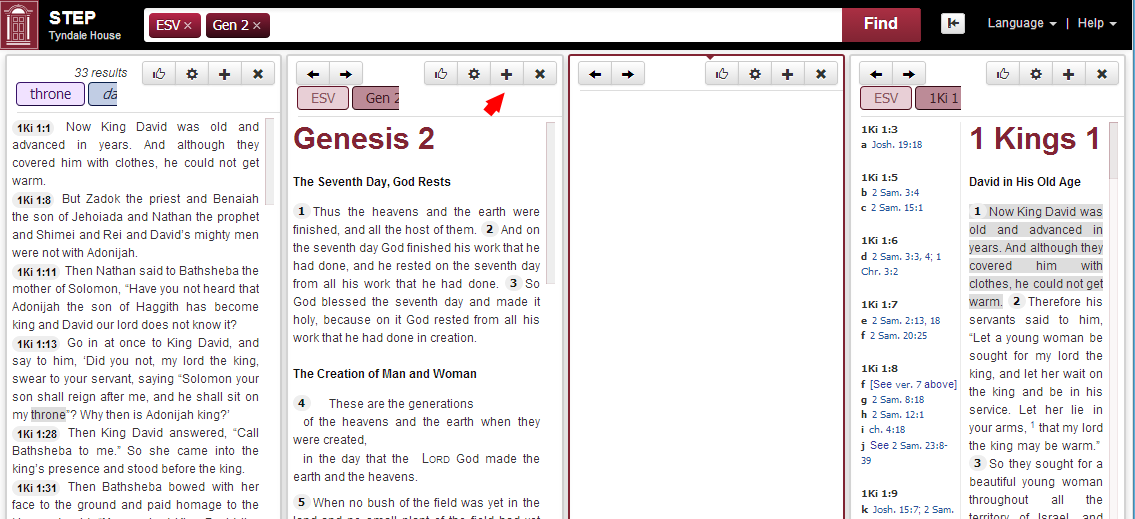
Jump to the section you want to see:
www.STEPBible.org is created and supported by Bible scholars at Tyndale House, Cambridge
with a great deal of help from volunteers and partnering by many organisations.